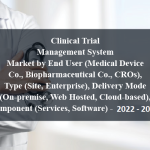OVERVIEW
The Medical Robots Market is projected to grow significantly from USD 7.3 billion in 2024 to an estimated USD 15.2 billion by 2029, reflecting a CAGR of 15.5% during the forecast period. Medical robots include robotic systems used in various medical applications such as surgery, rehabilitation, and medical transportation. This market encompasses surgical robots, rehabilitation robots, telepresence robots, and hospital robots. The increasing prevalence of chronic diseases, advancements in robotic technologies, and the growing demand for minimally invasive surgeries are driving the market’s growth.
The market’s expansion is also supported by rising healthcare expenditure, increased awareness of robotic-assisted procedures, and the integration of advanced technologies such as artificial intelligence (AI) and machine learning (ML) in medical robots. However, challenges such as high costs of robotic systems, stringent regulatory requirements, and the complexity of integrating robotic systems into existing healthcare workflows need to be addressed to sustain market growth.
Geographically, North America and Europe dominate the medical robots market due to their advanced healthcare infrastructure, significant investments in healthcare, and high adoption rates of innovative robotic technologies. The Asia Pacific region is also expected to witness substantial growth, driven by increasing healthcare expenditure, growing demand for advanced medical technologies, and the expanding healthcare sector.
Market Dynamics
Drivers:
The primary driver of the Medical Robots Market is the increasing prevalence of chronic diseases. Conditions such as cardiovascular diseases, cancer, and neurological disorders are becoming more common worldwide, necessitating advanced and effective treatment options. Medical robots play a crucial role in enhancing surgical precision, reducing recovery times, and improving patient outcomes. Surgical robots, for example, enable minimally invasive procedures that result in smaller incisions, less pain, and faster recovery compared to traditional surgery. Additionally, advancements in robotic technologies, such as the development of AI-powered systems and improved robotic arms, are enhancing the capabilities and accuracy of medical robots, contributing to market growth.
Another significant driver is the growing demand for minimally invasive surgeries. Patients and healthcare providers are increasingly opting for procedures that offer shorter recovery times, fewer complications, and improved outcomes. Medical robots, such as the da Vinci Surgical System, are widely used in various surgical procedures, including gynecology, urology, and orthopedics, to provide precise and minimally invasive treatment. The integration of advanced technologies, such as AI and ML, is further enhancing the capabilities of medical robots, enabling real-time imaging, autonomous decision-making, and personalized treatment plans. The rising preference for minimally invasive surgeries and the continuous advancements in robotic technologies are driving the growth of the medical robots market.
Key Opportunities
The Medical Robots Market presents numerous opportunities for growth and innovation, particularly in the development and integration of advanced technologies. One prominent opportunity lies in the increasing use of AI and ML in medical robots. AI and ML can enhance the capabilities of medical robots by enabling real-time data analysis, autonomous decision-making, and personalized treatment plans. The integration of AI with robotic systems is expected to drive market growth by providing more intelligent and efficient robotic-assisted procedures. Additionally, AI-powered robots can analyze large datasets, identify patterns, and predict patient outcomes, facilitating early intervention and improving patient care.
The growing focus on expanding the applications of medical robots presents another lucrative opportunity for the market. While medical robots are commonly used in surgery, there is increasing interest in exploring their potential for other applications, such as rehabilitation, diagnostics, and patient care. Rehabilitation robots, for example, are used to assist patients in recovering from strokes, injuries, and surgeries by providing targeted and repetitive exercises. Telepresence robots are used to facilitate remote consultations and patient monitoring, improving access to healthcare services. The expanding applications of medical robots are expected to drive market growth by providing new solutions for a broader range of medical conditions and treatment needs. Vendors that invest in research and development to explore new applications and improve existing robotic technologies are well-positioned to capitalize on this market trend.
Restraints:
One of the significant restraints in the medical robots market is the high cost of robotic systems. The development and deployment of advanced robotic technologies, such as surgical robots and AI-powered systems, require substantial investments in research, equipment, and training. The high upfront costs and ongoing maintenance expenses can be a barrier to adoption, particularly for small and medium-sized healthcare facilities with limited budgets. Additionally, the cost of consumables and replacement parts used in robotic systems further increases the total cost of ownership. To overcome this restraint, vendors need to offer cost-effective solutions and flexible pricing models that cater to the diverse needs of healthcare providers.
Robotic systems and procedures must undergo rigorous validation and approval processes to ensure their safety, efficacy, and reliability. Compliance with regulatory standards, such as the FDA’s approval process and the European Union’s Medical Device Regulation (MDR), is essential for market entry and commercialization. The complexity of integrating robotic systems, which involves updating healthcare protocols and training personnel, further complicates the regulatory landscape. Ensuring compliance with regulatory requirements and maintaining high-quality standards is critical for the successful deployment and operation of medical robots. Vendors must navigate these regulatory challenges and invest in quality assurance to meet the stringent requirements of the healthcare industry.
Regional Information:
- North America
North America remains a significant market for medical robots, characterized by advanced healthcare infrastructure, high adoption rates of innovative robotic technologies, and substantial investments in healthcare research and development. The region’s strong presence of leading medical device manufacturers and the high focus on enhancing patient care drive market growth. The increasing prevalence of chronic diseases, such as cardiovascular diseases and cancer, is propelling the adoption of medical robots in the region. Furthermore, stringent regulatory requirements and the need for advanced surgical solutions encourage healthcare providers to invest in robotic technologies. However, the high cost of robotic systems and regulatory complexities remain challenges that need to be addressed to fully capitalize on the market potential.
- Europe
Europe leads in the adoption of medical robots, driven by stringent regulatory requirements, significant investments in healthcare infrastructure, and a strong commitment to improving patient outcomes. The region’s focus on innovation and technological advancement fuels the demand for advanced robotic solutions. Countries like the UK, Germany, and France are at the forefront of implementing robotic technologies to enhance surgical and diagnostic capabilities and ensure compliance with regulatory standards. The European Union’s regulations, such as the Medical Device Regulation (MDR) and the In Vitro Diagnostic Regulation (IVDR), mandate stringent data protection and quality assurance measures, further driving market growth. However, economic uncertainties and the complexity of regulatory compliance necessitate strategic planning and risk management to navigate the market landscape effectively.
- Asia Pacific
The Asia Pacific region is expected to witness the highest growth rate in the medical robots market due to rapid digital transformation, increasing healthcare expenditure, and the expanding healthcare sector. Countries like China, India, and Japan are investing heavily in robotic solutions to support business growth and enhance patient care capabilities. The region’s expanding middle class and rising disposable incomes are also contributing to the increasing adoption of medical robots in various sectors such as hospitals, diagnostic laboratories, and research institutes. Governments in the region are implementing initiatives to promote digitalization and support the growth of the healthcare economy, further driving market growth. However, challenges related to regulatory compliance, fluctuating economic conditions, and the need for skilled healthcare professionals necessitate localized strategies and market insights for successful market penetration.
Recent Developments:
In November 2023, Jabil Inc. announced the successful acquisition of Retronix, an innovative provider in the reclamation and refurbishment of electronic components, completed earlier this year.
In January 2023, Integer announced the acquisition of Pulse Technologies, Inc., a privately held technology, engineering and contract manufacturing company focused on complex micro machining of medical device components for high growth structural heart, heart pump, electrophysiology, leadless pacing, and neuromodulation markets.
Key market Players:
Frequently Asked Questions
1) What is the projected market value of the Medical Robots Market?
– The Medical Robots Market is expected to reach an estimated value of USD 15.2 billion in revenue by 2029.
2) What is the estimated CAGR of the Medical Robots Market over the 2024 to 2029 forecast period?
– The CAGR is estimated to be 15.5% for the Medical Robots Market over the 2024 to 2029.
3) Who are the key players in the Medical Robots Market?
– The primary drivers for the Medical Robots Market include the increasing prevalence of chronic diseases, the growing demand for minimally invasive surgeries, and advancements in robotic technologies. These factors are contributing to the rising demand for robotic solutions. The integration of artificial intelligence (AI) and machine learning (ML) is also driving market growth.
5) What are the restraints and challenges in the Medical Robots Market?
– The high cost of robotic systems and stringent regulatory requirements are significant challenges in the market. These factors can limit the adoption of advanced robotic technologies. Additionally, the complexity of integrating robotic systems into existing healthcare workflows and ensuring compliance with regulatory standards poses challenges that need to be addressed to ensure effective and secure robotic operations.
6) What are the key applications and offerings of the Medical Robots Market?
– Medical robots are essential for providing precise and effective treatment in various medical applications, including surgery, rehabilitation, and diagnostics. They enable minimally invasive surgical procedures with improved accuracy, reduced recovery times, and enhanced patient outcomes. These robots also support targeted rehabilitation exercises and facilitate remote consultations and patient monitoring. Additionally, medical robots are crucial in settings such as hospitals, diagnostic laboratories, and research institutes, enhancing the efficiency and effectiveness of patient care.
7) Which region is expected to drive the market for the forecast period?
– Asia pacific is expected to have the highest market growth from 2024 to 2029
Why Choose Us?
Insights into Market Trends: Global Market Studies reports provide valuable insights into market trends, including market size, segmentation, growth drivers, and market dynamics. This information helps clients make strategic decisions, such as product development, market positioning, and marketing strategies.
Competitor Analysis: Our reports provide detailed information about competitors, including their market share, product offerings, pricing, and competitive strategies. This data can be used to inform competitive strategies and to identify opportunities for growth and expansion.
Industry Forecasts: Our reports provide industry forecasts, which will inform your business strategies, such as investment decisions, production planning, and workforce planning. These forecasts can help you to prepare for future trends and to take advantage of growth opportunities.
Access to Industry Experts: Our solutions include contributions from industry experts, including analysts, consultants, and subject matter experts. This access to expert insights can be valuable for you to understand the market.
Time and Cost Savings: Our team at Global Market Studies can save you time and reduce the cost of conducting market research by providing comprehensive and up-to-date information in a single report, avoiding the need for additional market research efforts.












